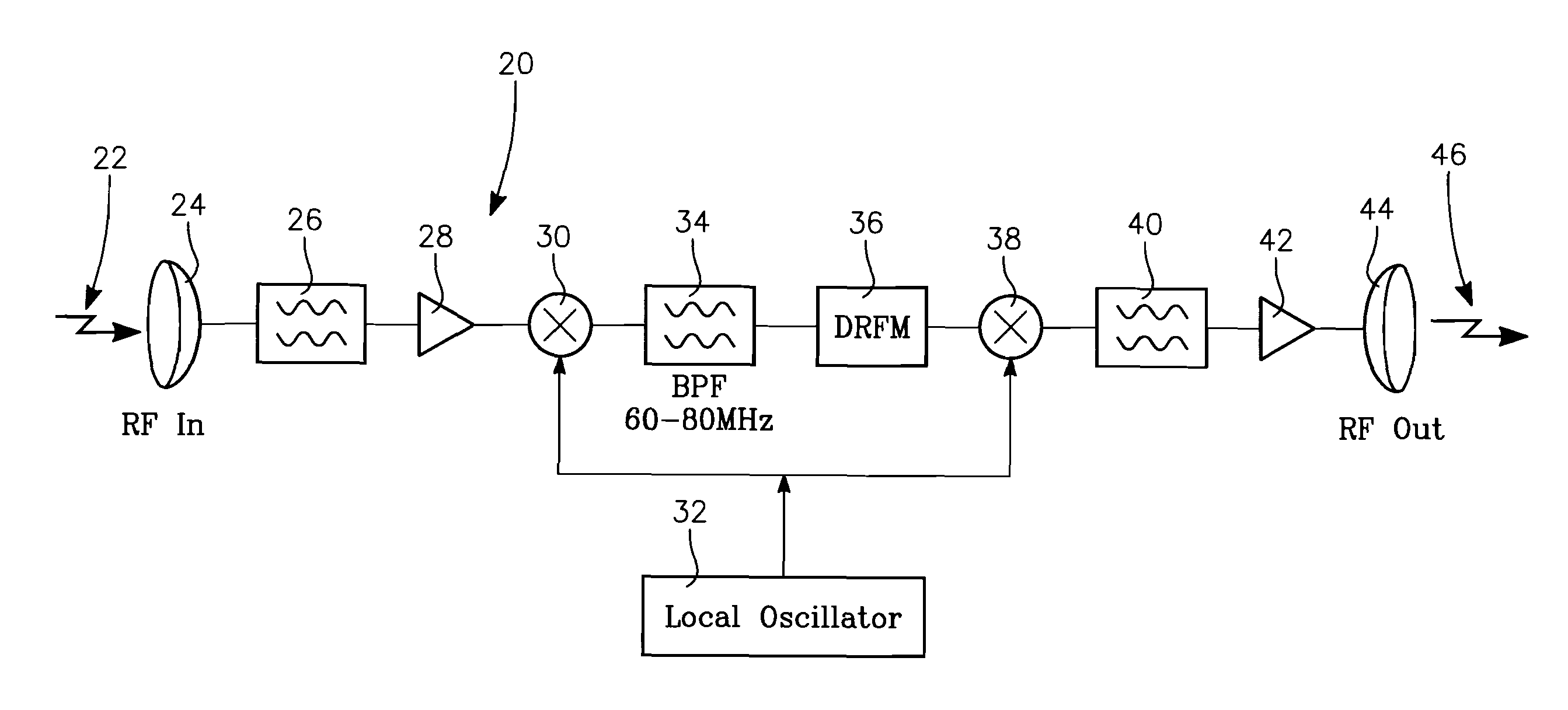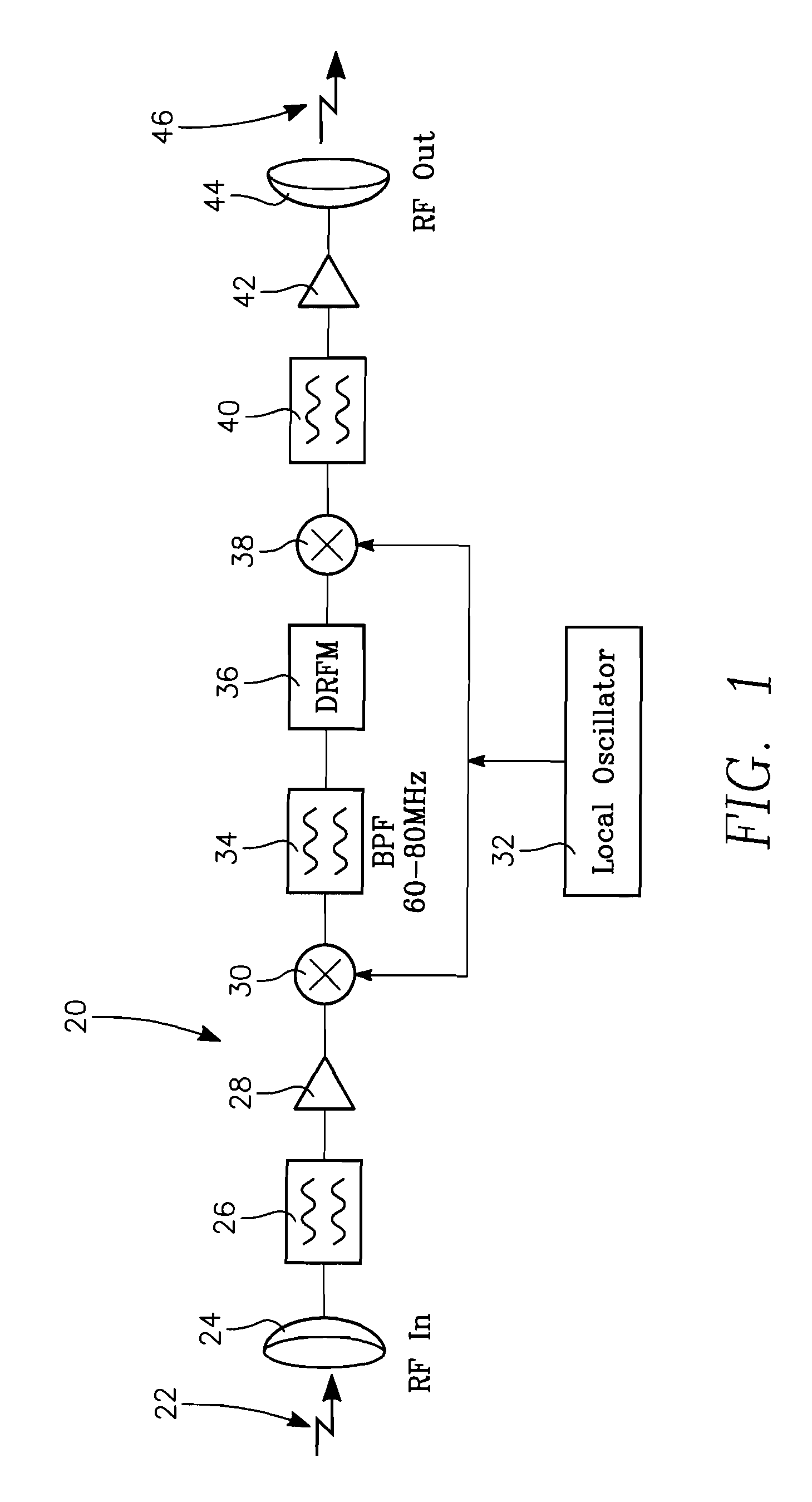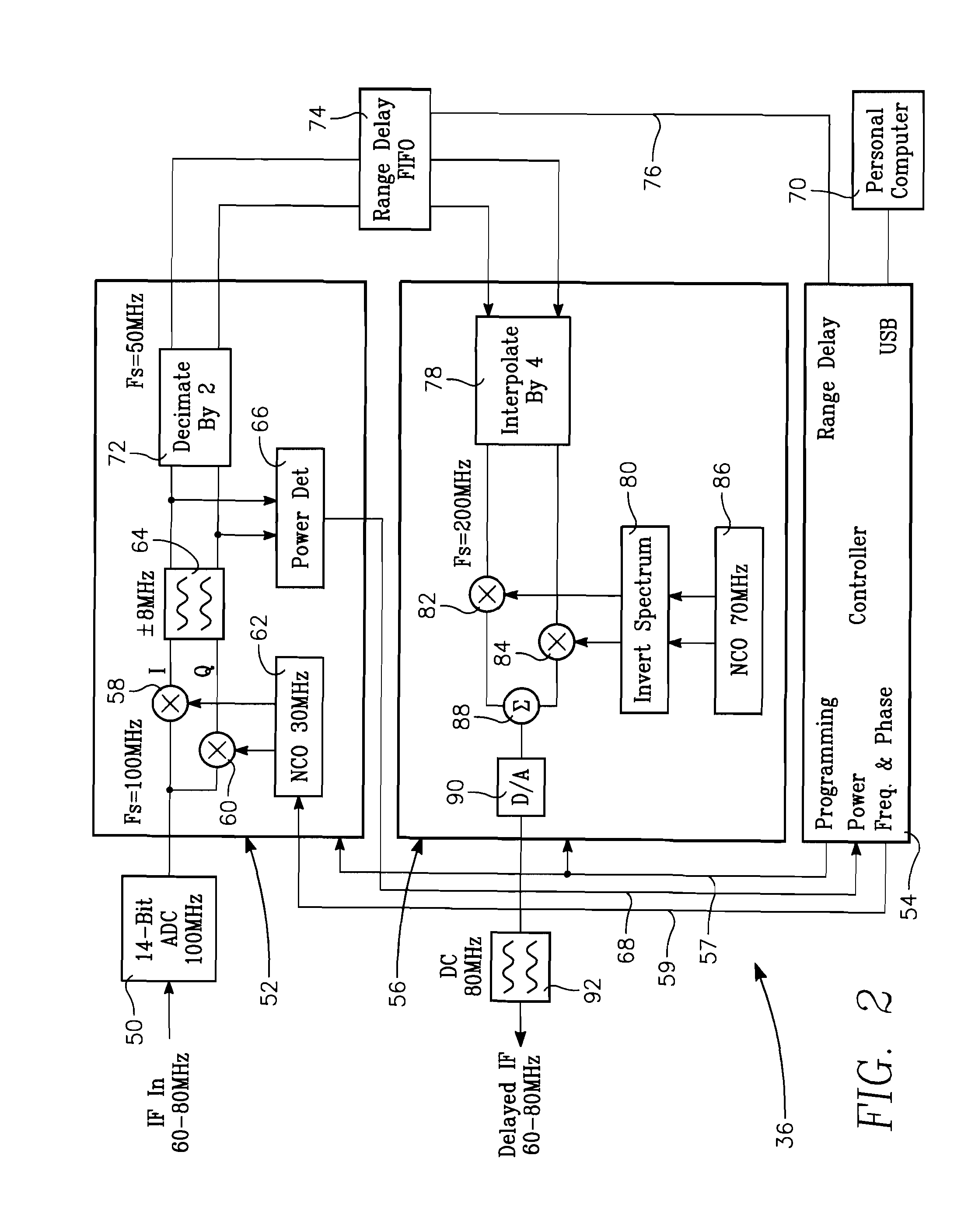Digital radio frequency memory
a digital radio frequency memory and digital technology, applied in pulse manipulation, instruments, pulse techniques, etc., can solve the problem of prohibitive cost of commercially available drfm systems for almost all applications
- Summary
- Abstract
- Description
- Claims
- Application Information
AI Technical Summary
Benefits of technology
Problems solved by technology
Method used
Image
Examples
Embodiment Construction
[0014]Referring to FIG. 1, there is shown an electrical schematic diagram of an RF signal processing circuit 20 which receives an incoming RF signal 22. A microwave antenna 24 receives the incoming RF signal 22. An electrical equivalent signal of RF signal 22 is supplied by antenna 24 to a bandpass filter 26. The RF signal 22 has a frequency of 14 GHz.
[0015]Bandpass filter 26 selects a frequency which is compatible with a radar system the digital radio frequency memory is designed to operate with, passing that frequency and rejecting all other frequencies. The bandpass filter 26 has a passband of 13.9 GHz to 14.1 GHz. Connected to the output of filter 26 is an amplifier 28 which amplifies the RF electrical signal.
[0016]Mixer 30 receives the amplified RF electrical signal from amplifier 28, summing the signal with a signal generated by a Local Oscillator 32. The electrical signal output from mixer 30 has a frequency of 70 MHz, which is an IF (Intermediate Frequency) signal. For each ...
PUM
 Login to View More
Login to View More Abstract
Description
Claims
Application Information
 Login to View More
Login to View More - R&D
- Intellectual Property
- Life Sciences
- Materials
- Tech Scout
- Unparalleled Data Quality
- Higher Quality Content
- 60% Fewer Hallucinations
Browse by: Latest US Patents, China's latest patents, Technical Efficacy Thesaurus, Application Domain, Technology Topic, Popular Technical Reports.
© 2025 PatSnap. All rights reserved.Legal|Privacy policy|Modern Slavery Act Transparency Statement|Sitemap|About US| Contact US: help@patsnap.com



